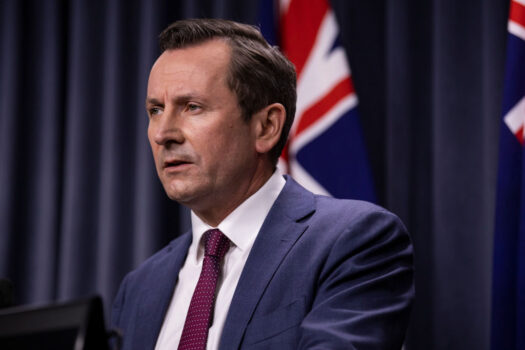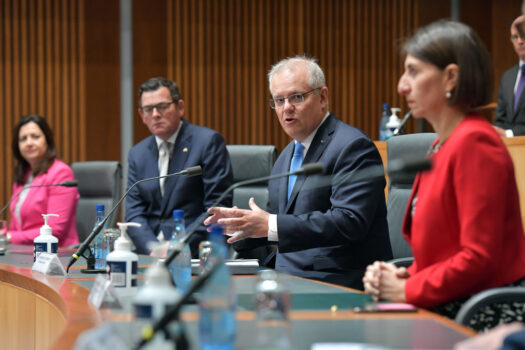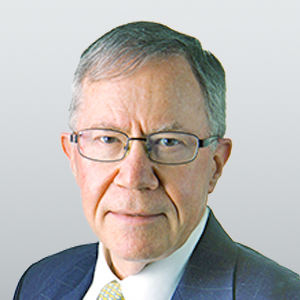Commentary
There are signs in public attitudes and statements by at least some of Australia’s political and business leaders that the national mood is becoming less accepting of restrictions to eliminate or contain COVID-19—and increasingly aware of the costs of trying to do so.
This shift is undoubtedly being helped along by a vaccination roll-out that is going far better than anyone dared hope just a month ago.
COVID-19 restrictions have two limbs—lockdowns (or “stay at home” orders) and border restrictions, both interstate and international.
The state border restrictions most in the news are those imposed by Queensland and Western Australia, but these are merely the most prominent by virtue of the size of the states or the public profile of their premiers. In fact, border entry restrictions are currently imposed by every state and territory except New South Wales, where they would serve no purpose.
The cost of restrictions is most often related to lockdowns rather than border restrictions, but the latter are also very costly.
Border restrictions are likely to become the hottest issue once the 70 to 80 percent targets for full vaccination are reached in October or November, as states free or relatively free of COVID-19 infections will be reluctant to open up to those with a significant level of community transmission—or as Western Australia Premier Mark McGowan has said with all the drama he can muster, deliberately exposing their people to “disease and death.”

The cost of border restrictions has a human dimension, due to the inability to travel across state lines or internationally to see relatives and friends and attend weddings and funerals.
And it has an economic dimension, which includes the inability of labour to move freely around the country to where it is most needed; the loss of immigration; disruption of tourism; frictions in the movement of goods across state borders and to and from other countries; and disruption of business links requiring a physical presence.
It is important to understand that the disruption occurs even in the absence of border restrictions, because the accumulation of 18 months’ experience had taught Australians that such restrictions can be imposed suddenly and even with retrospective effect—that is, even after you have started a trip, it can be disrupted by a sudden rule change. The risk and uncertainty has led many people to simply stop planning trips.
These costs multiply at the international level.
It is anyone’s guess exactly what the costs add up to, but they are very substantial and unevenly distributed across the population, because some are more affected than others.
There are some well-known examples: problems harvesting fruit because of a shortage of labour to pick it; a reported shortage of nurses in Western Australia because they cannot come from some of the usual sources; the cancellation of events such as the Sydney to Hobart Yacht Race last year and Melbourne’s Grand Prix; and this week, Netflix shifting production of a film from Australia to Eastern Europe.
What can be done about it?
The plan adopted by the National Cabinet in July states that restrictions will be eased once vaccination reaches 70 percent of the eligible population and very substantially eased at 80 percent. However, it is clear that some state leaders will baulk at implementing their part of the plan.
In that event, there is still hope.

There is the possibility of another challenge to the constitutional validity of state border restrictions. Mining billionaire Clive Palmer mounted such a challenge to Western Australia last year and lost, but the widespread availability and administration of vaccines is a significant change that might lead to a different outcome from a second challenge. And if it happens, this time the federal government should be in the High Court supporting the challenger.
At the international level, controls on entry to-and-from the country are entirely in the hands of the federal government, and in opening up it would be doing exactly what the agreed national plan says.
The catch comes if a state wants to put international arrivals into hotel quarantine, which is so unappealing to all but the most desperate travellers that it effectively kills international travel. Even here, however, the federal government is not powerless to override the states as it has constitutional power over quarantine.
Even without resorting to that power, the federal government could limit the opening of international arrivals and departures to states agreeing not to require hotel quarantine.
We can be fairly certain that New South Wales—home to the country’s major international airport—would cooperate with such an arrangement, and demonstrate to the rest of the country what they are missing out on. State Premier Gladys Berejiklian has said so.
This tantalising prospect has led Qantas boss Alan Joyce to observe wistfully that New South Wales residents might be able to visit family in London for Christmas but not in Perth—and that the Qantas route to London could be shifted from Perth to Darwin.
The federal government could also make it more difficult for states to apply lockdowns by withdrawing financial support once the vaccination thresholds are met.
Ultimately, the federal government will probably hesitate to confront the states in any of these ways, but that is what it will come to if state leaders refuse to budge.
Views expressed in this article are the opinions of the author and do not necessarily reflect the views of The Epoch Times.
 RSS Feed
RSS Feed















 September 4th, 2021
September 4th, 2021  Awake Goy
Awake Goy 
 Posted in
Posted in  Tags:
Tags: 













